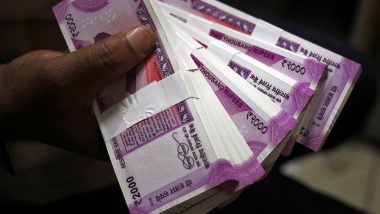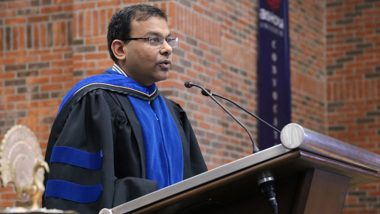New Delhi, September 19: Indian households donated "Rs 23.7 thousand crore" in 2021-22 with the maximum donations going to religious organisations, according to a study by Ashoka University. The report titled "How India Gives, 2020-21" by the Centre for Social Impact and Philanthropy (CSIP) at Ashoka University and World Panel Division of Kantar, has found that Indians largely donate in cash. A total of 81,000 households across 18 states were surveyed for the study.
"Religious beliefs provide the primary motivations for Indians to give followed by the desire to support someone in financial distress and follow family traditions. South India donates the highest average amount followed by west India, while incidences of giving were highest in eastern and northern India," the study report said.
The study reveals that 64 per cent of household giving was directed towards "religious organisations" and 61 per cent towards "beggars", while the lowest incidence of giving was directed towards household staff at 3 per cent. Mahakal Temple Receives Huge Donations.
"Word of mouth from family and friends served as an important source of information and accounted for 27 per cent of the total religious donations. It is also interesting to note that the percentage of total share of households who donated in rural India is higher than urban India. This survey did not reveal a high incidence of ‘volunteering' among households," the report said. The amount of total cash donations towards religious organisations was estimated to be "Rs 16.6 thousand crore, which constituted 70 per cent share of the market".
This was followed by 'beggars' with estimated share of 12 per cent (Rs 2.9 thousand crore), 'family and friends' at 9 per cent (Rs 2 thousand crore), 'non-religious organisations' at 5 per cent (Rs 1.1 thousand crore), and 'household staff' at 4 per cent (Rs 1 thousand crore).
"Of the total incidence of household giving, more households contribute to religious organisations (64 per cent), followed by beggars (61 per cent), family and friends (9 per cent), non-religious organisations (5 per cent), and household staff (4 per cent).
"High value donations (above Rs 10,000; between Rs 5,000 and Rs 10,000; and between Rs 1,001 and Rs 5,000) were mainly made to family and friends and to household staff. The lowest value cash donations (Rs 100) were made mainly to beggars, while slightly lager amounts (between Rs 101 and Rs 300, and between Rs 301 and Rs 500) were given to religious organisations and non-religious organisations," it said.
The study also pointed out that donations to religious organisations were driven by occasions and festivals. "Such donations were predominant in north and east India, and in rural areas. The responses revealed that prominent places of worship such as temple, churches, mosques and gurdwaras were among the highest recipients. The most common motivation behind giving to religious organisations was family traditions that encouraged giving on special or auspicious occasions and festivals.
"These responses also show that giving to non-religious organisations was more prevalent in south and east India and in urban areas. Households in the higher-income groups also donated more to non-religious causes," it said.
(This is an unedited and auto-generated story from Syndicated News feed, LatestLY Staff may not have modified or edited the content body)













 Quickly
Quickly





















